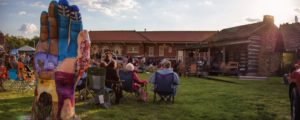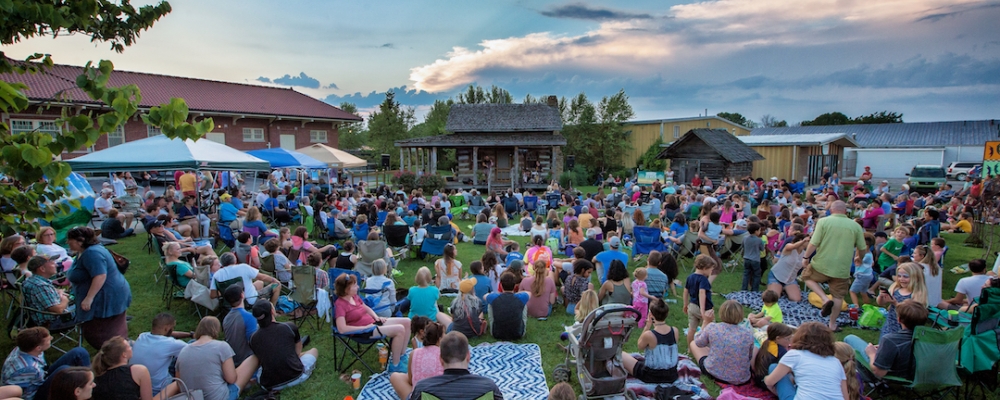The city of Berea, Kentucky began with its namesake college, founded in 1855 by John G. Fee around a vision of peace and acceptance among all people.
Fee had a grand plan for the area, which until then had been an agricultural area called Glade. Being a radical Christian who took Jesus’ “love thy neighbor” instruction quite literally, Fee named his school Berea College after a biblical town, and welcomed African-Americans and poor whites from Eastern Kentucky to live and learn together as equals.
Fee saw something of great value in the culture of the place and the people of Appalachia. The art they created, the music they made, the songs they sang, the dances they danced, the stories they told — all of it passed from generation to generation by word of mouth, rarely written down and recorded for subsequent generations’ sake.
 Today, Berea College is thriving, and is unique in many ways, such as the fact that none of their students pay tuition. I (Storm) have been hearing wonderful stories about the revitalizing projects and activities of Berea College students for over a decade now, but haven’t yet written about the school in my books, or here in REVITALIZATION. I hope to remedy that soon.
Today, Berea College is thriving, and is unique in many ways, such as the fact that none of their students pay tuition. I (Storm) have been hearing wonderful stories about the revitalizing projects and activities of Berea College students for over a decade now, but haven’t yet written about the school in my books, or here in REVITALIZATION. I hope to remedy that soon.
In 1966, Interstate 75 cut through Berea, Kentucky, siphoning traffic from the town center, and making it much easier for locals to spend weekends 40 miles north in Lexington. Local businesses started to close. Walmart came to town, forcing the local grocery out of business.
It looked like the Apocalypse was upon them, as national economic downturns and the state’s overall loss of coal-mining jobs continued to take a toll on the town. Many Kentucky towns are still in desperate straits. But not Berea, which is now one of the fastest-growing communities in the state. It’s home to a thriving population of weavers, instrument makers, furniture artisans, jewelry designers, glass workers, potters, painters, sculptors and musicians, and has over 40 art galleries.
Steve Connelly has been mayor for 15 years, long enough to help usher in the town’s renaissance as an arts and crafts capital. Here’s how this miracle of resilient renewal happened.
In 1982, the Berea City Commission passed a hotel/motel tax and started a tourism commission. The World’s Fair was in Knoxville that year, and Berea wanted to catch I-75 travelers on their way south. The commission passed a 3 percent tax, and from 1982 to 2007, the all-volunteer tourism commission received about $125,000 a year from the tax.
Further tax reform was made in 2007 during the Great Recession when Berea raised its property tax rate from the lowest in the state at .03 percent, to 10 percent. Soon after, they instituted a 3 percent restaurant tax, and the tourism budget quickly shot up to nearly one million dollars a year.
Berea then hired full-time staff for the Tourism Commission for the first time in its history, and with their budget in place, the commission was able to officially advertise Berea as the Capital of Arts and Crafts. With the advertising came tourists, and with the tourists came economic activity that bolstered the community in more sustainable ways.
“What we’re seeing is success breeds other success,” says Danny Isaacs, the city’s Director of Business Development. People see entrepreneurs opening businesses and finding success, and they become more willing to take risks themselves. “It gives other folks the same sort of confidence.”
“We’re still looking at commercial development opportunities, but those are the home runs, and you win a lot of games hitting a bunch of singles,” Isaacs added. “For us, small business development and entrepreneurship is our strategy of hitting singles. And we’re seeing a bunch of those while we’re prepping ourselves for home runs.”
“[Economic growth] goes back to building on what you have and what you’re known for,” Isaacs consluded. “For Berea, the natural choice was arts and crafts. It’s been a part of the cultural fabric in Berea for longer than any of us have been around.”
Berea’s vision is to build a thriving local economy where creativity isn’t just a piece of what happens, but is fully integrated in any economic endeavor.
See full Next City article by Ivy Brashear.

